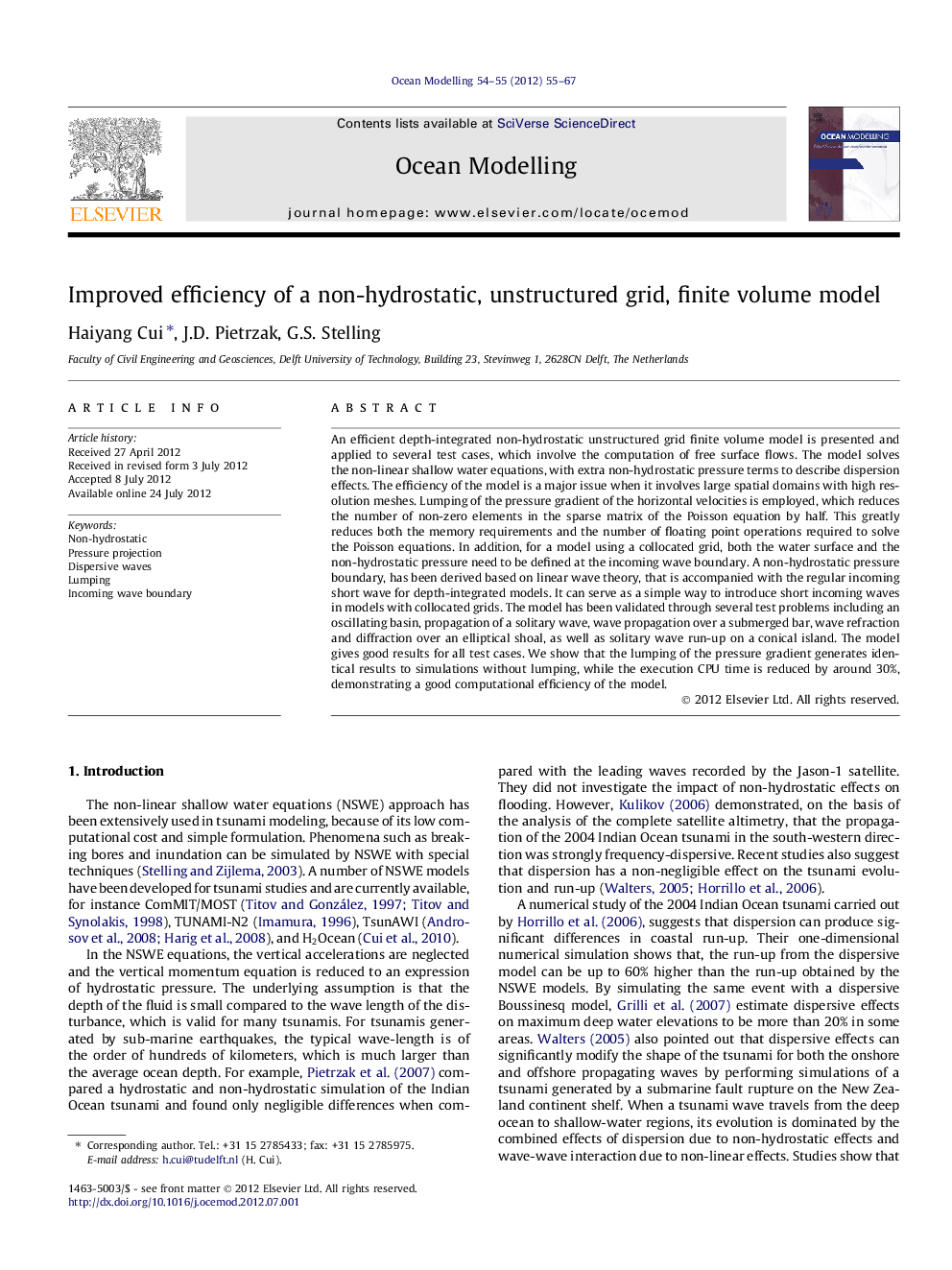| کد مقاله | کد نشریه | سال انتشار | مقاله انگلیسی | نسخه تمام متن |
|---|---|---|---|---|
| 4552180 | 1627791 | 2012 | 13 صفحه PDF | دانلود رایگان |

An efficient depth-integrated non-hydrostatic unstructured grid finite volume model is presented and applied to several test cases, which involve the computation of free surface flows. The model solves the non-linear shallow water equations, with extra non-hydrostatic pressure terms to describe dispersion effects. The efficiency of the model is a major issue when it involves large spatial domains with high resolution meshes. Lumping of the pressure gradient of the horizontal velocities is employed, which reduces the number of non-zero elements in the sparse matrix of the Poisson equation by half. This greatly reduces both the memory requirements and the number of floating point operations required to solve the Poisson equations. In addition, for a model using a collocated grid, both the water surface and the non-hydrostatic pressure need to be defined at the incoming wave boundary. A non-hydrostatic pressure boundary, has been derived based on linear wave theory, that is accompanied with the regular incoming short wave for depth-integrated models. It can serve as a simple way to introduce short incoming waves in models with collocated grids. The model has been validated through several test problems including an oscillating basin, propagation of a solitary wave, wave propagation over a submerged bar, wave refraction and diffraction over an elliptical shoal, as well as solitary wave run-up on a conical island. The model gives good results for all test cases. We show that the lumping of the pressure gradient generates identical results to simulations without lumping, while the execution CPU time is reduced by around 30%, demonstrating a good computational efficiency of the model.
► An efficient depth-integrated non-hydrostatic model, H2Ocean, has been presented.
► A lumping scheme has been introduced to improve the efficiency of the model.
► The CPU time is reduced by 30%.
► A non-hydrostatic pressure boundary has been derived.
Journal: Ocean Modelling - Volumes 54–55, September 2012, Pages 55–67